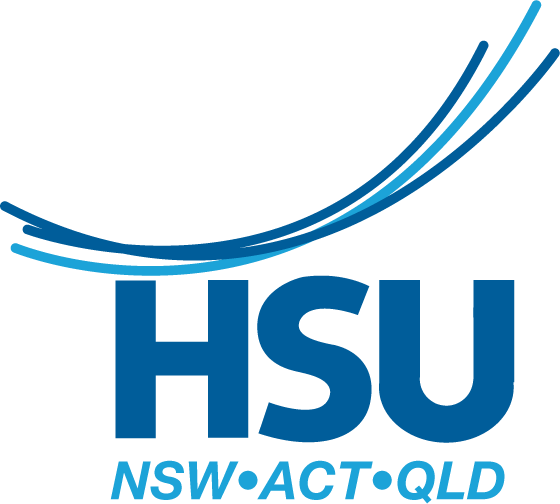Paramedics reveal their biggest challenge as wage fight continues

-
Published November 18, 2023
The Daily Telegraph, 18 November 2023
Paramedics are pushing for a pay rise, arguing their wages no longer reflect their job. The Sunday Telegraph asked three officers to describe their most challenging cases in the past two years.
It was the “most confronting” scene veteran ambulance officer Paul Taylor had encountered — a young woman clutching her two premature babies, still attached to her but neither of them breathing.
You might think no amount of money in the world could make it worth dealing with cases such as this. But the Health Services Union has warned almost 600 NSW paramedics have left for Queensland, where the pay is 20 per cent higher.
The HSU is calling on the government to match the pay rates of Queensland ambos.
Mr Taylor certainly earned every cent and more the morning when he arrived at a budget Goulburn motel to find a young mum with what was to become one of the youngest surviving sets of twins ever born outside of a hospital in Australia.
Weighing little more than 500g each — or two blocks of butter — the babies were “blue” in colour and their separate umbilical cords were tangled.
“The call came in right on 7am an with imminent birth at a Goulburn motel,” Taylor, 61, recalled.
“When we got there, she’d already delivered twins and was nursing them in a towel. They were still attached to her, and not breathing.
“There was also no heartbeat. No crying. They were blue, but one had a slightly better colour than the other,” he said.
“I just remember their bodies, their limbs being so small, so fragile. About 20cm from top to bottom.
“I’ve seen a lot of things in 36 years … that would be one of the most confronting.
“We train for the birth of babies. We train for complications. But there are some things that go beyond all of that.”
The situation required quick decisions — and improvisation. The clothing to keep newborns worn in ambulance “baby kits” did not fit.
It was also immediately obvious both babies were need resuscitating. But first, the three patients needed to be “separated”, Taylor said.
“Mum was on her own, but she was good and wasn’t panicking.
“Obviously, she wasn’t expecting this to happen,” he said. “Normally we have one patient, but in this case we had three – and all three were attached to each other.
“We worked out which cord was with which baby, and cut and clamped it. “
The babies were passed to Taylor’s accompanying crew members, as the resuscitation procedures began.
To stop the newborns losing heat, the twins were each placed in a medical plastic bag with their heads out before being wrapped in blankets and beanies that had to be tied to make them small enough.
A few puffs of the resuscitation mask kickstarted the twins’ breathing, with their hearts also starting to beat.
“They went from blue to pink,” Taylor said.
The two ambulance crews transported the three patients to Goulburn Hospital, where two choppers awaited them flew them to a better equipped hospital in Canberra.
Taylor has been told since that both twins survived, although have the expected issues of babies born so prematurely.
“I have been told that they are believed to be one of the youngest surviving out of hospital birth cases,” he said.
Taylor said the perception that paramedics simply started hearts and “carted patients” was outdated: “I look at what is in my intensive care ambulance outside and its exponential from what I had when I first started my career.”
And that is just a taste of what ambos confront every day.
Campbelltown paramedic Tess Oxley described one of her most challenging call-outs in the past year as the one to assist a terminal cancer patient.
The woman had not yet started on a palliative care plan, but was struggling to breathe.
Her shortness of breath triggered a triple-0 call from her distressed family.
Oxley assessed the woman as having begun the active dying process. In consultation with the family, it was decided the women would be allowed to die with dignity and respect in her home, with her family around her.
Oxley ensured the woman was not scared and was able to assure the family she was not in pain.
Reassured, the family supported the woman by singing, praying and saying goodbye, around her.
Without her calm assessment, the woman would have likely died in a loud ambulance or a busy hospital, alone and disorientated.
Northmead paramedic Alex Allen was called to a GP office where a woman had accidentally eaten food to which she was allergic.
Initially “stable”, the GP gave her adrenaline before the paramedics placed her on a stretcher.
Once in the ambulance, her condition deteriorated rapidly towards anaphylaxis, with her airway closing up, leaving the terrified woman gasping for air.
Allen and his team deployed aggressive treatment, including five rounds of adrenaline, oxygen, nebulised salbutamol, nebulised adrenaline, hydrocortisone, IV, a full bag of Hartmanns fluids and 12 lead ECG.
At the time, Allen had a brand-new trainee with him who had not dealt with a life-threatening situation before but who was calmly instructed on how best help.
A bag valve mask — oxygen mask — was set up in case of further deterioration.
The woman recovered, with Allen saying both she and her husband “thanked us profusely.”
HSU NSW Secretary Gerard Hayes said paramedics would continue to move interstate until wages were improved.
“Paramedics can earn tens of thousands of dollars more and enjoy cheaper housing north of the border,” he said.
“If anyone has a good explanation for why paramedics earn one-fifth less here than they do in Queensland I’d love to hear it.
“Our paramedics are trained as professionals and work as professionals. They deserve to be paid that way.”
